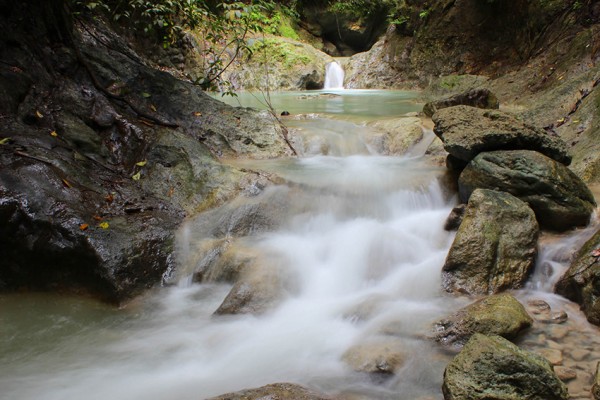
New Math Method Improves Hydrology Simulations for Climate Models

Image courtesy of Storm Crypt (Flickr) via a Creative Commons License.
Scientists have developed a new approach that uses sophisticated mathematical solutions to improve computational simulations of ecosystem water processes.
Just as a racecar's engine needs the right fuel to get the best performance, so climate models need finely tuned parameters to accurately simulate the impacts of different technologies and policies.
Led by researchers at Pacific Northwest National Laboratory, a team applied sophisticated mathematical solutions to fine tune the water and energy exchange parameters, numerical stand-ins for complex processes, to more accurately simulate water and energy fluxes in the Community Land Model under different climate and environmental conditions.
The Impact
Calibrating the water and energy exchange parameters significantly improved simulations compared to results using the default Community Land Model parameter values.
Summary
The exchange of water and energy between the atmosphere and land is among the most uncertain aspects of climate modeling. For example, when rain falls on land, the amount of water that evaporates back into the atmosphere or gets carried by groundwater to rivers and the ocean is unclear.
The answer to this and similar questions could be estimated using climate models, but these models have numerous variables or “parameters” that must be adjusted based on observations of different regions of the Earth. One way to adjust these parameters is to run the model repeatedly, each time changing the parameters individually until a solution that matches observations is found.
However, it is possible that a different set of solutions would also match observations. Researchers evaluated inversion methodologies at select field sites based on global sensitivity analyses. They found significant improvements in the model simulations that better match the observed heat flux and runoff by using the estimated parameters compared to using the default parameters.Improvements in heat flux were found especially in areas with strong energy and water constraints.
Funding
This work is supported by the Climate Science for a Sustainable Energy Future project funded by the U.S. Department of Energy (DOE) Office of Science through the Earth System Modeling Program. Pacific Northwest National Laboratory's (PNNL) Platform for Regional Integrated Modeling and Analysis (PRIMA) Initiative provided support for the model configuration and datasets used in the numerical experiments.
Additional support was provided by the National Science Foundation of China (NSFC51190092, 51222901) and the foundation of the State Key Laboratory of Hydroscience and Engineering of Tsinghua University (2012-KY-03).
Publication
Y. Sun, Z. Hou, M. Huang, F. Tian, and L.R. Leung,”Inverse modeling of hydrologic parameters using surface flux and runoff observations in the Community Land Model.” Hydrology and Earth System Sciences 17, 4995–5011 (2013). [DOI: 10.5194/hess-17-4995-2013].
Contact Information
Kristin Manke
kristin.manke@science.doe.gov















